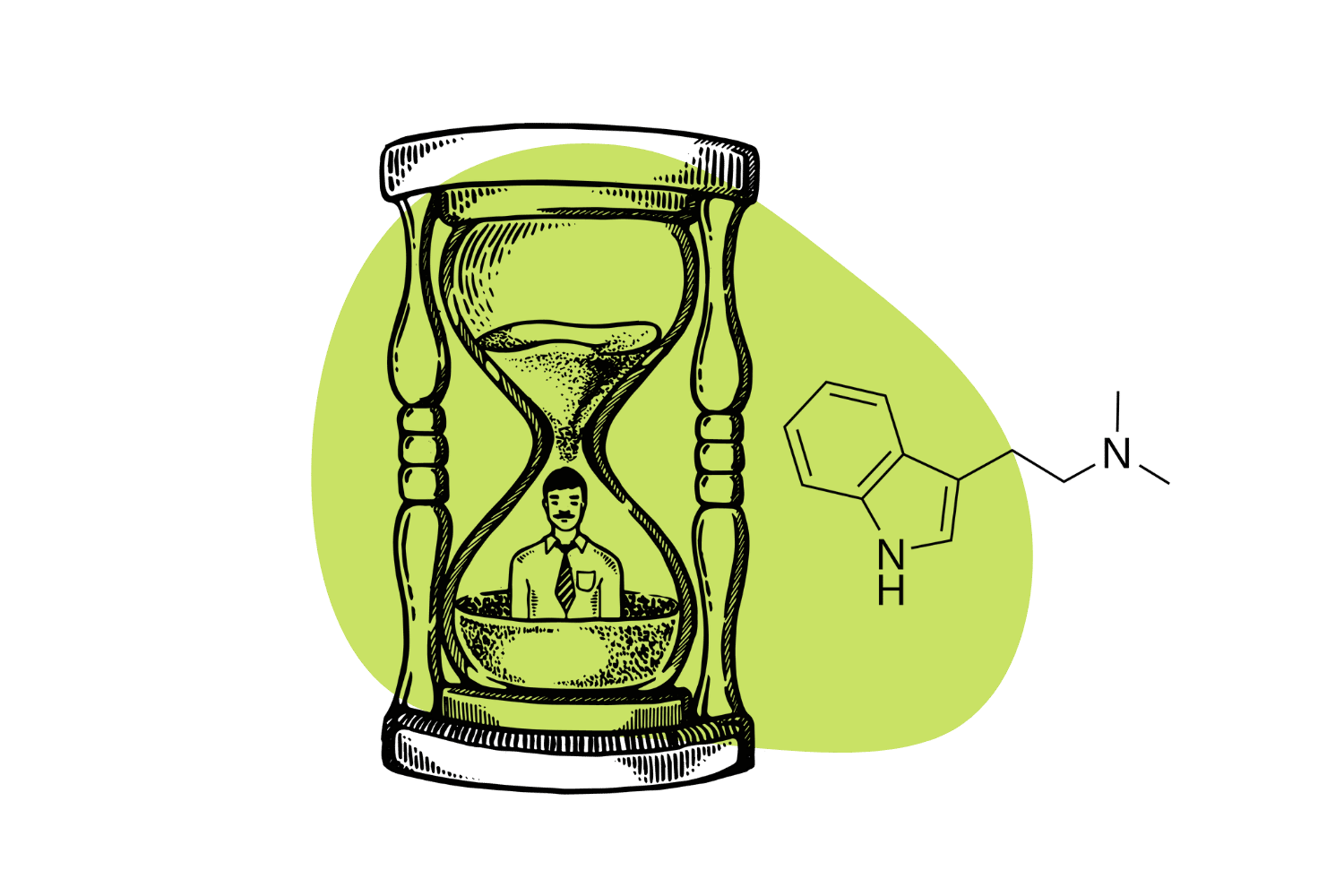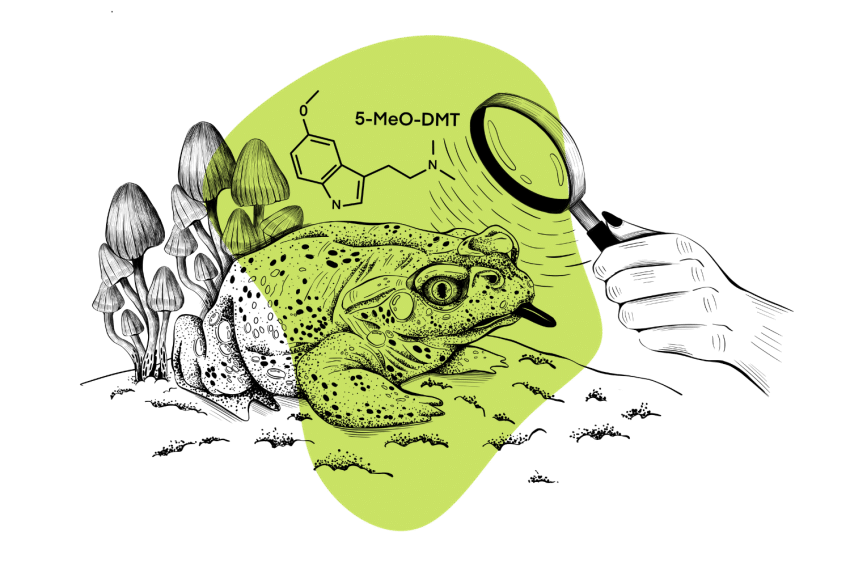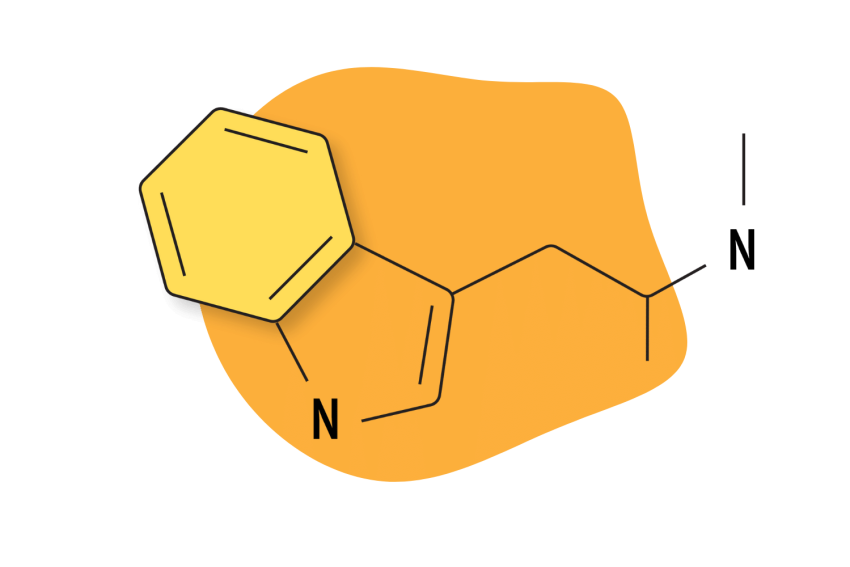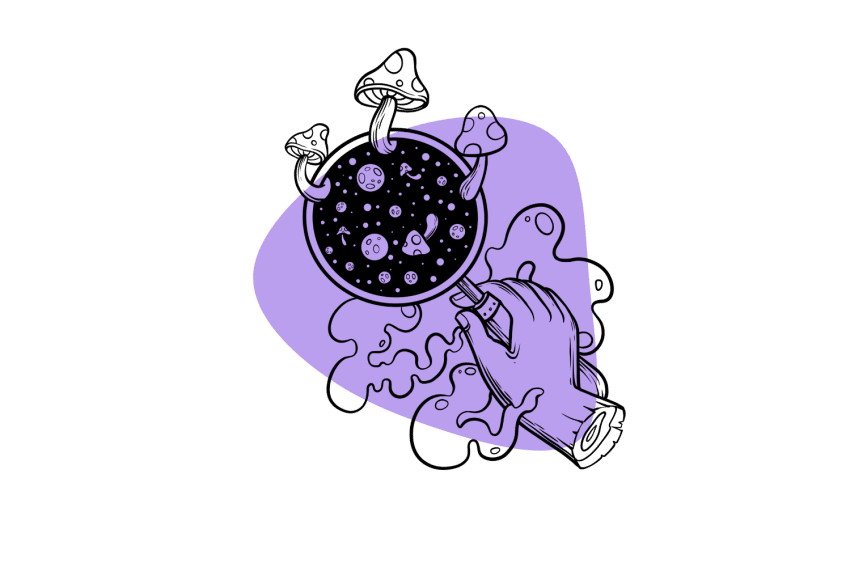Psychoactive Toad Venom (Bufo Alvarius)
The bufo toad secretes a powerful cocktail of psychedelic compounds through pores on its back.
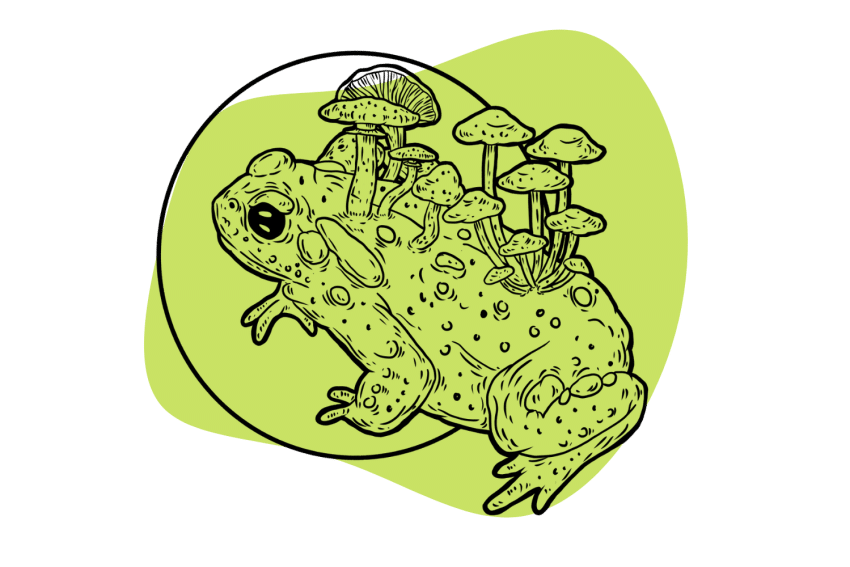
Bufo alvarius is a species of toad living around creek beds and streams flowing through the Southern United States and Mexico.
This toad secretes a venom through pores on its back that contains a high concentration of 5-MeO-DMT — one of the most potent psychedelics on Earth.
Just a few milligrams of the venom is enough to completely blow your mind. It’s one of the rare substances that can reliably induce a religious experience with a single puff from a vape.
But the effects are incredibly short-lived — lasting as little as 7 minutes (up to 45 minutes).
Here, we’ll explore psychedelic toad venom. You’ll learn how it works, how it’s used, and what safety considerations to keep in mind before trying it yourself.
There are also some ethical considerations you should know about before getting started with this powerful animal-based psychedelic.
What is Psychedelic Toad Venom?
Many species of toads secrete venom through pores on their back. This venom is designed to help the animal repel predators such as birds, dogs, snakes, or other animals. In most cases, the venom has a potent bitter flavor, a pungent aroma, and may contain toxic compounds.
One species of toad — the Colorado river toad (AKA the Sonoran desert toad) — takes a different approach. This toad secretes a powerful combination of the psychedelic compounds 5-MeO-DMT and bufotenin.
Psychedelic toad venom is collected by “milking” the toads to secrete and collect the venom or removing the skin on the back where the glands are located.

Toad venom can be vaped or smoked to produce powerful psychedelic experiences. The effects are on the same level of intensity as ayahuasca or synthetic forms of DMT — only they appear much more quickly.
Ayahuasca gradually brings you into the psychedelic realm — helping you warm up to the experience and introducing you slowly to a world you never would have even thought possible.
Psychedelic toad venom doesn’t wait. It injects you directly into this world in a matter of seconds.
Related: Learn about kambo frog medicine.
Toad Venom: Specs & Technical Details
| Active Ingredients | 5-MeO-DMT, Bufotenin |
| Level of Risk | High |
| Street Names | Colorado River Toad, Sonoran Desert Toad, Toad Venom |
| Most Common Side-Effects | Fear & anxiety, nausea |
| Duration of Effects | 7–45 minutes |
| Legality | Illegal Worldwide |
The Colorado River Toad
(Bufo alvarius — formerly Incilius alvarius)
The Colorado river toad (AKA the Sonoran desert toad) is a species of toad found in the Southern United States and Mexico.
This toad is the largest species of toad in the United States, with the exception of the non-native cane toad (Rhinella marina). These toads can grow to be as large as 7.5 inches (190 mm).
The venom secreted by the Colorado River toad is used to repel predators. It contains both psychoactive compounds, as well as a deadly poison. When an animal tries to eat the toad, it’s given a powerful dose of poison strong enough to kill a large dog.

Animals that aren’t killed by the poison suffer from the effects of the psychoactive compounds — which can last anywhere from 20 to 45 minutes — which effectively incapacitates the animal by placing them into a powerful psychotic trance.
Animals living in the region appear to have learned ways to avoid the venom secreted by these toads.
For example, racoons have been reported to drag these toads from the water by a limb, flipping them on their back to avoid exposure to the venom, and only eating the belly of the animal (away from the venom).
It’s common for dogs to try and eat these toads, which is often fatal.
Where to Find Bufo Toads
The name of this animal gives a clue as to where they live. You can find these toads abundantly around the Colorado River, as well as the Gila River, and throughout parts of Arizona, California, and New Mexico.
As a toad, it requires a steady supply of water to keep hydrated. It prefers standing areas of water near streams, rivers, canals, ditches, and artificial bodies of water.
5-MeO-DMT
The primary active ingredient in toad venom is 5-MeO-DMT. This form of DMT (dimethyltryptamine) is roughly 4 or 5 times as potent as N,N-DMT found in the psychoactive plant medicine — ayahuasca.
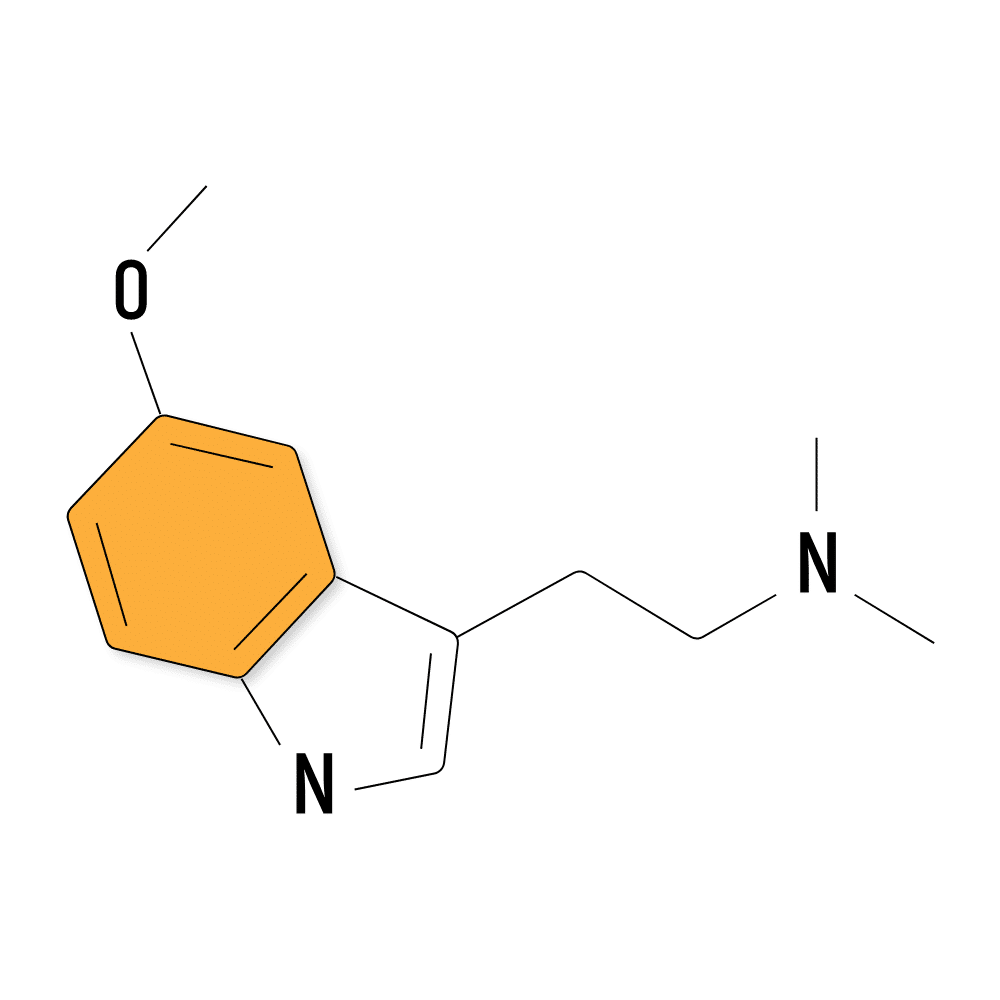
Toad venom is reported to contain roughly 30% 5-MeO-DMT by weight. Most of the rest of the venom contains salts, minerals, proteins, and high molecular weight compounds. When toad venom is vaped or smoked, the vapor contains almost exclusively 5-MeO-DMT and bufotenin.
5-MeO-DMT is extremely potent but relatively short-acting. The effects last around 30 minutes from start to finish. However, one of its effects is an altered perception of time, which can make users experience several lifetimes in a single trip.
This compound is a tryptamine-based hallucinogen — which means it works by activating the 5-HT2A and 5-HT2C serotonin receptors in the brain. This is the same mechanism as most classical psychedelics, including LSD, magic mushrooms, and mescaline [4].
5-MeO-DMT also has a particularly high binding affinity for the 5-HT1A receptors [3].
Other sources of this compound include:
- Anadenanthera peregrina
- Virola theiodora
- Amanita muscaria
Bufotenin
Bufotenin (5-HO-DMT) is the second psychoactive compound produced in toad venom. It’s less psychoactive than 5-MeO-DMT, and found in lower concentrations.
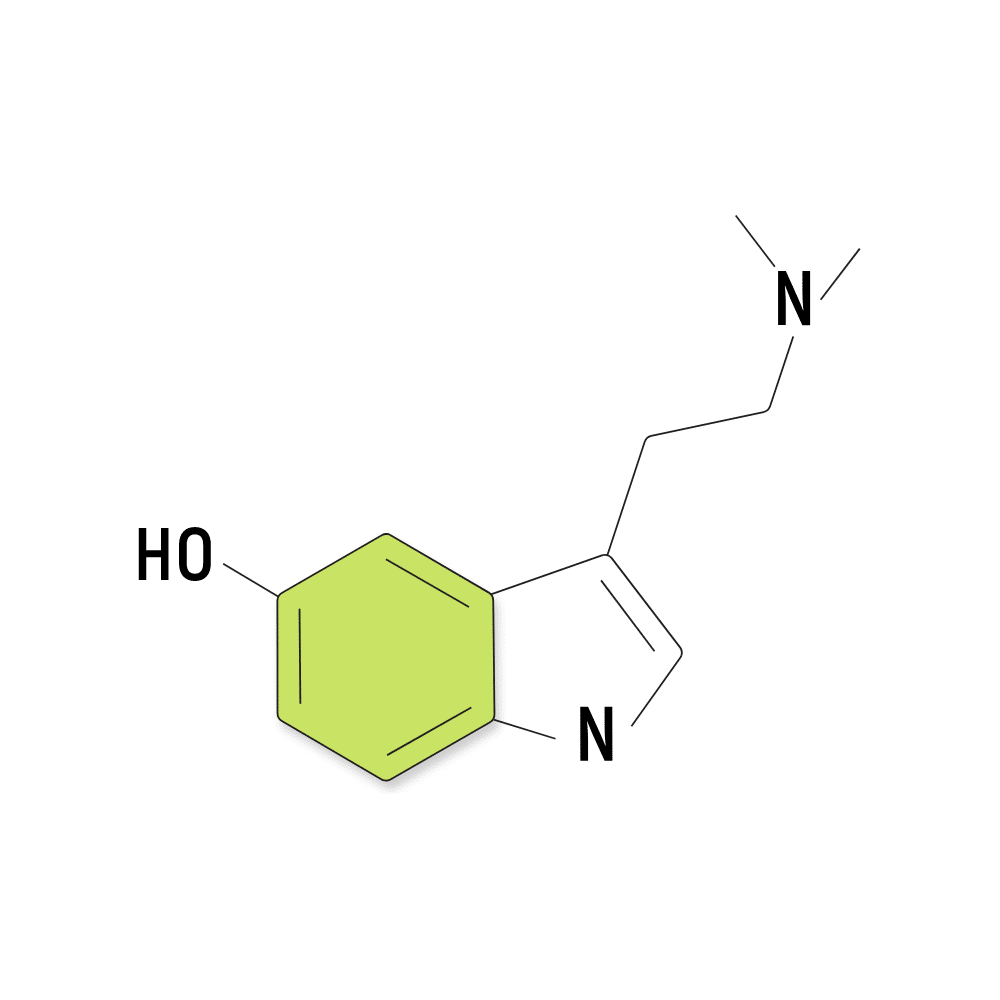
This compound is named after its prevalence in the Bufo alvarius toad species — which are the primary source of this compound in nature. This compound works in a very similar manner to other forms of DMT — acting on the 5HT2A serotonin receptors.
The effects of this psychedelic when used on its own tend to be negative — causing sensations such as pin-pricks in the limbs and face, redness of the skin, anxiety, and a sense of impending doom.
The hallucinogenic threshold of this substance was reported to be around 40 mg, and lasted up to 90 minutes.
What Does Toad Venom Feel Like?
Tripping on toad venom produces a profound experience.
Even very small doses are strong enough to completely remove your mind from reality. Intense, dream-like visions cause the user to enter “alternate realities”, encounter beings from other dimensions, and cause ego-death experiences.
Unlike other forms of DMT, toad venom has less emphasis on visual hallucinations — such as geometric patterns, swirling shapes, or merging objects.
The experience, when not completely out of body, tends to be more of a perspective shift than perceptual. It feels like you’re outside your body and your emotions and thoughts are unlike anything you’ve ever experienced before.
There are a lot of trip reports on websites like Reddit for people using toad venom.
Here are some of the common experiences reported by toad venom users:
- Living through several lifetimes
- Meeting aliens or other interdimensional forms of life
- Fusion with god and the universe
- Ego death
- Uncovering “the true meaning of life”
- Strong sense of wholeness or connectedness
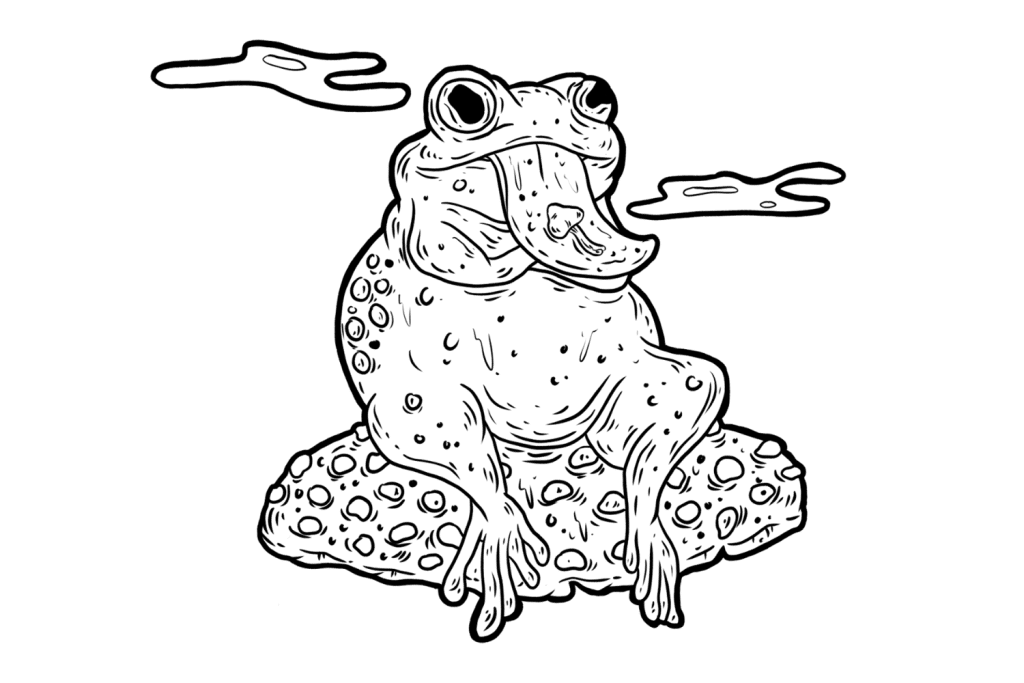
How Long Do The Effects of Toad Venom Last?
The effects of this venom are profound but very short-lived. The effects usually don’t last any longer than about 30 minutes.
The duration of the trip largely depends on the consumption method:
| Method of Consumption | Onset of Effects | Effect Duration |
| Smokes or Vaped | 5–10 Seconds | 20–30 Minutes |
| Eaten (Orally Ingested) | 5 Minutes | 20–45 Minutes |
| Injection | 5–10 Seconds | 15–30 Minutes |
What’s The Dose of Toad Venom & 5-MeO-DMT?
The most common way of using toad venom is to smoke or vape it.
The usual dose of dried and powdered toad venom is around 5 – 40 mg — which is inhaled with a single deep breath.
Synthetic 5-MeO-DMT is much stronger. The smoked or vaped dose of this substance is just 3–6 mg. A high dose is considered anything over 6 mg.
Eating the venom is much more unpredictable. The usual dose can range from 10–60 mg. Everybody reacts differently when eating venom. Some people won’t feel much at all at this dose, others may experience substantial effects with as little as 10 mg.
How Much Does Psychoactive Toad Venom Cost?
Toad venom is very expensive. It’s illegal and very hard to get.
A single gram of dried toad venom can cost between $100 to $300 on the black market. This would be enough for around 2–3 individual doses. This works out to around $30–$150 per dose or higher.
Live toads can be purchased online (also illegal) at around $500–$1000 per toad.
You can also partake in ceremonies run by shamans in some parts of Mexico. This includes a single dose of the venom (usually smoked or vaped), in a group setting. A ceremony with a shaman costs between $200 and $500 per person for a session.
Synthetic 5-MeO-DMT is, by far, the cheapest. One gram costs around $130 — which is enough for roughly 10 doses. This works out to around $13 per dose.
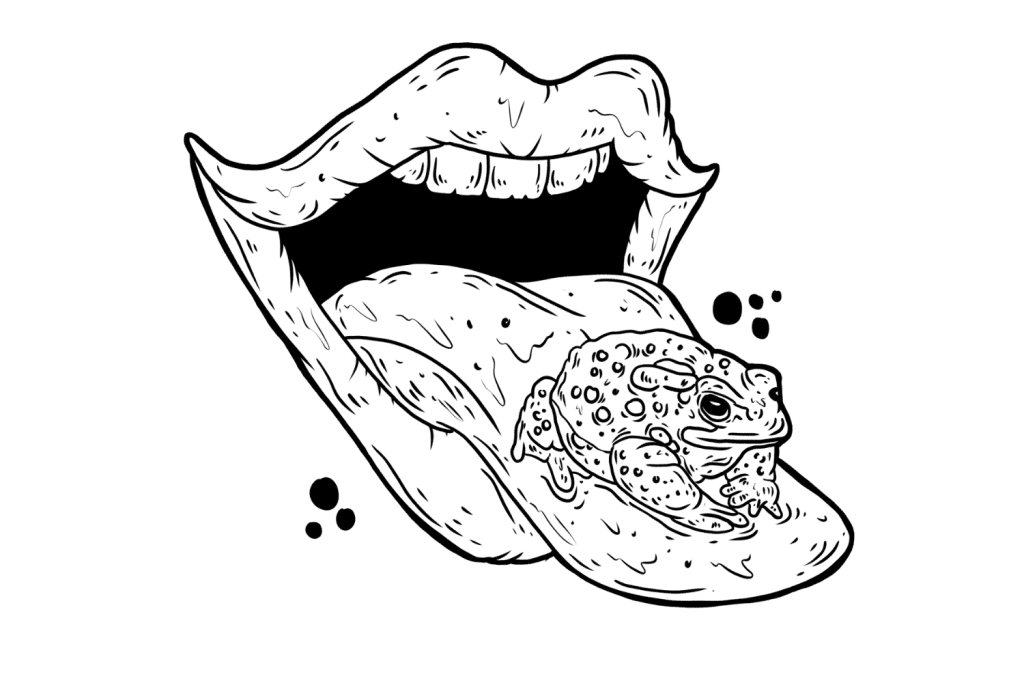
Is Toad Venom Legal?
The active ingredient in toad venom, 5-MeO-DMT, is highly illegal in most countries, including the United States (Schedule I controlled substance).
Both US neighbors, Canada and Mexico, don’t prohibit the use of synthetic 5-MeO-DMT, and there are several online resellers for this compound operating within a legal grey area.
However, the toad and its venom itself are illegal in just about every part of the world (mainly due to environmental regulations). It’s only permitted for use by certain indigenous groups where the toad was an integral part of their culture, and for medical research.
The toad that produces the venom is also aggressively protected in all regions in which it lives currently. No state where the Colorado River toad is indigenous allows the sale of the animal or removal from state lines. It’s also illegal to breed the animal anywhere in the United States.
In Arizona, an individual may bag up to 10 of these toads legally with a fishing license but can be charged for possessing a controlled substance if it’s deemed the animal is going to be used for recreational purposes. This is a bit of a grey area because there aren’t many uses for this toad beyond its psychoactive effects.
This road is classified as endangered in the state of California and is therefore illegal to be in possession of the animal for any reason.
Bufo toad venom and 5-MeO-DMT are currently being explored for use in psychedelic-assisted psychotherapy.
The Ethical Dilemma of Using Toad Venom
There are a few ethical concerns with using natural toad venom.
First of all, these animals are endangered. The growing interest in the psychoactive effect of these toads has led many to start collecting them from their natural environment at an alarming rate. The number of naturalized toads is starting to diminish despite new laws and regulations put in place to protect the animal.
Large-scale use of the toad poses a serious risk to the survival and systemic health of these toads.
These toads are facing several different problems at the same time:
- Human development is destroying their natural habitats
- Roads attract bugs, which attract toads, which get killed by the cars
- Global warming has a particularly devastating impact on toads and other amphibians
- Growing interest in toad venom has created a profitable business of illegal toad-hunting
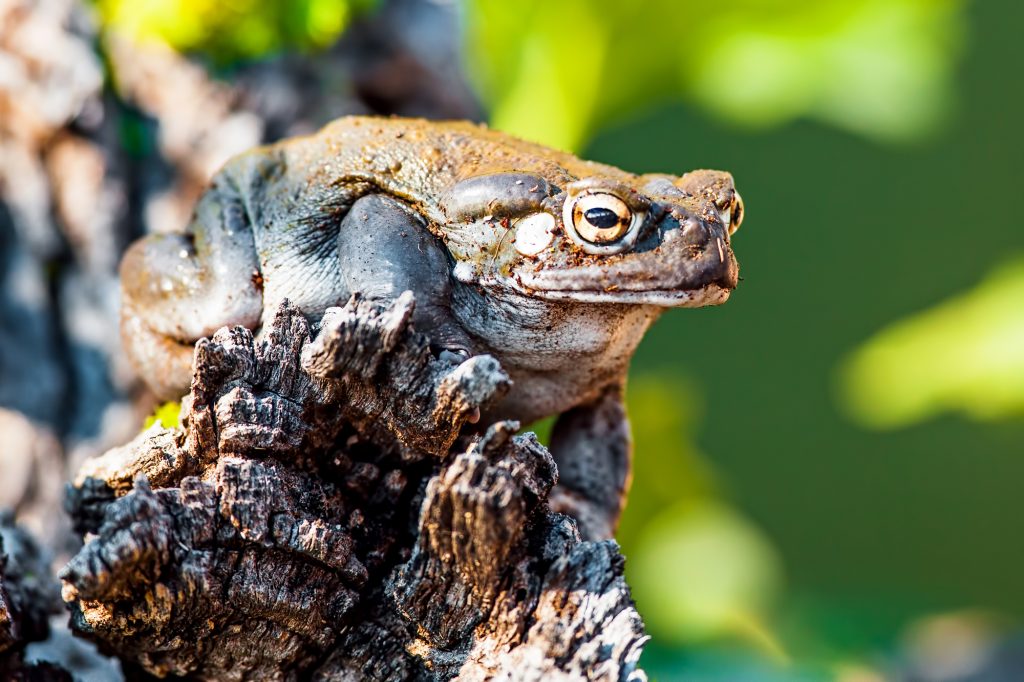
Is Toad Milking More Ethical?
Some people believe collecting the venom from the animals with a method called “toad milking” is more ethical because the animals are then released back into their environment. But even this isn’t without its problems. The toad relies on this venom as protection, and it can take a while for released venom to replenish. If the toads are “milked” and later attacked by an animal, they no longer have the defenses required to survive the attack.
Use Synthetic 5-MeO-DMT Instead
Many people suggest using synthetic 5-MeO-DMT instead. This compound is abundant, cheap, and provides very similar effects as the natural toad venom. It’s also legal in many parts of the world and has a high level of safety.
As toad venom becomes more popular, the damage to these already rare and endangered toads will only continue to worsen. We need to respect these animals and preserve their natural habitat.
How Strong is Toad Venom Compared to Other Psychedelics?
5-MeO-DMT is one of the strongest psychedelics known to man. It’s roughly 5 times stronger than N,N-DMT, and significantly stronger than LSD, psilocybin, and mescaline. The mechanism of effects shares many similarities with these other drugs and is very comparable in how it feels.
It’s hard to achieve a low dose of this substance because even a single hit from a vaporizer is enough to blast the user off into another dimension altogether.
Compared to most psychedelics, toad venom has a very short duration of effects. Psilocybin remains active for around 6–8 hours, LSD for 8–10 hours, and DMT in the form of ayahuasca is around 10 hours. Toad venom lasts just 20 or 30 minutes.
Is Toad Venom Safe?
Toad venom is generally regarded as safe as long as it’s prepared properly. The venom is rich in psychoactive compounds, but also contains toxic elements that have resulted in several deaths in the past.
Eating the dried venom requires some particular preparation to remove or deactivate these compounds.
The safest way to use the drug is to smoke or vaporize it. This is because most (if not all) of the toxic elements in the venom are too large or heavy to evaporate with the smoke and enter the lungs. Most people who use this substance will vape or smoke it, or go with a purified synthetic version of the active 5-MeO-DMT.
A trip sitter is always recommended when using toad venom or 5-MeO-DMT. The effects can be very powerful — causing the user to lose control of their body for several minutes at a time. A trip sitter should remain nearby to make sure the user doesn’t wander off or accidentally harm themselves or others.
This substance should also never be combined with other drugs or substances — especially MAO inhibitors, antidepressants, or alcohol.
Always follow the pillars of safe psychedelic use when taking any psychedelic substance — no matter if it’s your first time or your 100th.
Side Effects of Toad Venom
- Fear, anxiety, & paranoia
- Rapid heart rate
- High blood pressure
- Paralysis
- Loss of muscle coordination
- Loss of consciousness
- Nausea & vomiting
Toad Venom & Depression
There’s some research to suggest that psychoactive toad venom can be used to treat conditions like depression and addiction.
A lot of this research has piggy-backed off the focus on related psychoactive compounds like LSD or psilocybin — but there’s very little research on toad venom specifically.
Because of the risks that come with using this venom, and the endangered status of these toads, it’s not likely we’re going to see a lot of focus in the research community for this effect, especially when there are so many other, similar compounds to use instead.
With that said, synthetic forms of one of the active ingredients — 5-MeO-DMT — are being looked at in more detail, and the research thus far is promising.
A recent study at John Hopkins University explored the effects of 5-MeO-DMT for depression [1]. The study included 362 participants that routinely used the venom for ceremonial purposes. 162 of these participants self-reported anxiety or depression. Of these participants, nearly 80% reported direct improvements in mental health after using the drug.
Some researchers, such as Alan Davis, a researcher at John Hopkins University in the psychedelic division, suggest toad venom and 5-MeO-DMT has clear benefits compared to psilocybin because of how short-lived the effects are. This substance only lasts around 30 minutes and appears to provide the same benefits towards depression as psilocybin [2] — which lasts closer to 6 hours in total.
More research is sure to come in the near future on 5-MeO-DMT. A psychedelic research group — Beckley Foundation — recently secured $3.7 million in a Series A funding round to study a variety of psychedelics, including synthetic 5-MeO-DMT.
Frequently Asked Questions About Psychedelic Toad Venom
If you have any questions about psychedelic toad venom that haven’t been answered in this post or in the FAQ below, feel free to reach out to us. We’d love to answer any of your questions.
1. Is Toad Venom Addictive?
There’s no evidence that toad venom is addictive.
Most people who use the venom, only do it once. There are some people who use it on a consistent basis, but rather than being on a daily, or even weekly basis, most people who use the venom consistently do so with several weeks or months between each dose.
Addiction is defined as a compulsion to use a substance or perform an activity despite clear negative implications.
This is simply not something that happens with psychedelics, including psychoactive toad venom.
2. Where Can I Find Colorado River Toads For Sale?
While it’s not illegal to possess a psychoactive species of toad — it is illegal to possess dried venom.
You can order toads from places like joshfrogs.com, allreptiles.com, or blackwaterreptiles.com.
If you live in the state of California, Bufo alvarius is considered endangered and it’s illegal to own the toad in any form — including wild-caught or captive-bred Colorado river toads.
3. Is There A Difference Between Toad Venom & 5-MeO-DMT?
This is an ongoing debate.
There are only two definitive psychoactive compounds produced in the Bufo alvarius toad venom — 5-MeO-DMT and bufotenin. Bufotenin is present only in trace amounts, and on its own has been repeatedly shown to produce a much more negative set of effects than positive.
There are plenty of other ingredients in toad venom, but the vast majority are non-volatile — which means that when we smoke or vape it, only the 5-MeO-DMT, and trace bufotenin is evaporated and inhaled into the lungs.
From a scientific standpoint, there is no difference between the effects of synthetic 5-MeO-DMT and toad venom.
Some people argue the toad venom feels different. However, it’s debatable whether there’s actually something in the venom that makes the experience different. What’s more likely is the human contribution to the experience.
When we know something is “natural” or came from a living, breathing organism, it changes the way we perceive the effects of the substance. This changes the experience, even when there’s no chemical difference between the two.
Some might argue there’s a spiritual difference between synthetic compounds, and equivalent animal or plant-based sources.
The Future of Toad Venom
The Bufo alvarius toad (AKA Colorado river toad, Sonoran desert toad), secretes one of the most psychoactive compounds on earth — 5-MeO-DMT. The venom is collected, dried, and smoked to produce an intense but short-lived psychedelic experience.
As this road continues to grow in popularity, there’s an ever-growing risk of damage and eradication of the animal from its wild habitat. Between poachers, climate change, and the destruction of natural habitats, wild toad populations are declining at an alarming rate.
If we want to preserve this sacred species, we need to start using the synthetic version of the substance much more often than the raw toad venom.
The active ingredient in toad venom, 5-MeO-DMT, is already legal in many parts of the world. The synthetic version produces the same set of effects, costs much less and doesn’t have any negative effects on wild toad populations.
Subscribe To Get a Weekly Dose of Psychedelics In Your Inbox
References
- Davis, A. K., So, S., Lancelotta, R., Barsuglia, J. P., & Griffiths, R. R. (2019). 5-methoxy-N, N-dimethyltryptamine (5-MeO-DMT) used in a naturalistic group setting is associated with unintended improvements in depression and anxiety. The American journal of drug and alcohol abuse, 45(2), 161-169.
- Barsuglia, J., Davis, A. K., Palmer, R., Lancelotta, R., Windham-Herman, A. M., Peterson, K., … & Griffiths, R. R. (2018). Intensity of mystical experiences occasioned by 5-MeO-DMT and comparison with a prior psilocybin study. Frontiers in psychology, 9, 2459.
- Shen, H. W., Jiang, X. L., C Winter, J., & Yu, A. M. (2010). Psychedelic 5-methoxy-N, N-dimethyltryptamine: metabolism, pharmacokinetics, drug interactions, and pharmacological actions. Current drug metabolism, 11(8), 659-666.
- Wallach, J. V. (2009). Endogenous hallucinogens as ligands of the trace amine receptors: a possible role in sensory perception. Medical hypotheses, 72(1), 91-94.
- Sullivan, B. K., & Malmos, K. B. (1994). Call variation in the Colorado river toad (Bufo alvarius): behavioral and phylogenetic implications. Herpetologica, 146-156.
- Dakic, V., Nascimento, J. M., Sartore, R. C., de Moraes Maciel, R., de Araujo, D. B., Ribeiro, S., … & Rehen, S. K. (2017). Short term changes in the proteome of human cerebral organoids induced by 5-MeO-DMT. Scientific reports, 7(1), 1-13.

